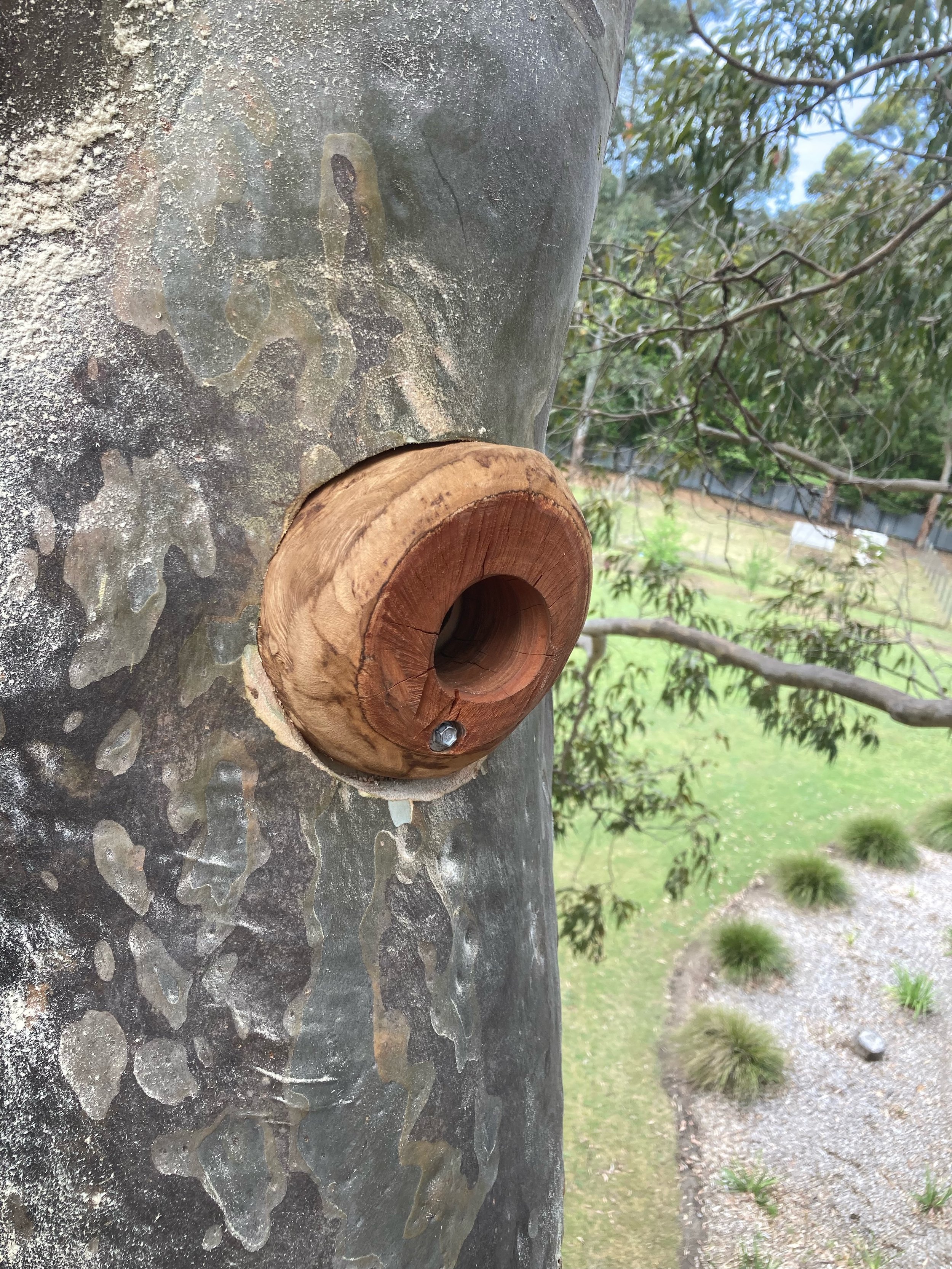
Habitat & Hollow Installation
Habitat for native wildlife
We recently invested in a new technology named the Hollow Hog. It is a unique wood carving tool specifically designed to create habitats for hollow-dependent wildlife.
The Hollow Hog mimics natural tree hollow formations. Creating large internal cavities through small entry holes (as small as 5cm). It’s as close to the real deal as it gets! Further, the hollows will last as long as the tree they are carved in, there is potential for hundreds of years of future breeding events.
Did you know hollows of medium size (suitable for animals such as parrots) will take around 200 years to form, and the larger and deeper hollows occupied by glossy black cockatoos and other larger animals such as masked owls can take even longer (Mackowski 1984; Menkorst 1984; and Scotts 1991).
Blows our mind that these native animals are reliant on nests that started forming back in the early 1800’s!
We are pleased to offer habitat and hollow installation services to support local wildlife. Our team of arborists are trained in the installation of habitat and hollows.
Our services include a consultation to determine the best location and type of hollow for your tree. We consider factors such as tree species, tree health, and animal habitat requirements to ensure that the hollow is both safe and suitable for the intended animal species.
FAQs
-
A habitat installation refers to the creation of a suitable living environment for wildlife, such as birds, bats, marsupials and insects. The installation typically involves the construction of artificial structures, such as nesting boxes which mimic the natural habitats of our natives and provide shelter, breeding, and feeding opportunities.
-
Habitat installations can provide a range of benefits for both wildlife and humans. For wildlife, they offer a safe place to live, breed, and raise young. They can also provide access to food sources and help to increase biodiversity. For humans, habitat installations can improve the aesthetic appeal of an area and provide opportunities for wildlife watching and educational activities.
-
A hollow installation refers to the construction of artificial hollows, typically in trees, which provide shelter and nesting opportunities for wildlife such as birds and bats. Hollow installations are often used as an alternative to natural tree hollows, which can be scarce in some areas due to habitat destruction.
-
Hollow installations are typically constructed by removing a small part of the tree (faceplate) and carving out an area designed to mimic the size and shape of a natural tree hollow. The faceplate is then reattached to the tree with a specific-sized entry hole depending on the species. The installation process should be carried out by trained professionals to ensure that it is done safely and does not harm the tree.
-
Hollow installations can benefit a wide range of wildlife, but they are particularly useful for birds and bats. Many bird species, such as parrots, rely on natural tree hollows for nesting and roosting. Bats also use tree hollows as roosting sites, particularly during the winter months when they hibernate.
-
Habitat and hollow installations should be located in areas where they are most likely to be used by wildlife. The location should be chosen based on the specific needs of the target species, such as the availability of food sources and the presence of other wildlife. It is important to ensure that the installation does not pose a risk to wildlife or human safety.
Interested in supporting native wildlife?
Contact us today to learn more about our services and how you can help support the ecosystem here in Newcastle and Lake Macquarie.



